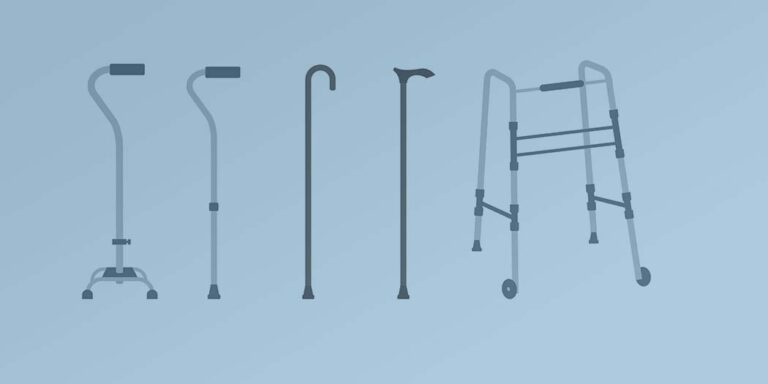Power Wheelchair Vs. Mobility Scooter – What’s The Difference?
Your mobility device is essential to your health and quality of life. Knowing as much as you can about the devices available is equally essential.
This article examines the difference between a power wheelchair and a mobility scooter and their use cases.
We will help you choose which device is right for you and your mobility needs.
Power Wheelchair
Also called an electric wheelchair or a motorized wheelchair. A powered wheelchair is like a manual wheelchair in its shape and the position of the user. Full-size models consist of a seat with armrests, leg rests, and footplates.
They also have a power base, and four to six wheels. Its user will be sitting upright in the seat.
But, a user propels the manual wheelchair by pushing on the chair’s hand rims. Or someone else pushing the chair from the back with handlebars.
Power wheelchairs generally do not need anyone but the user to move or steer them. Which they do with a joystick installed in the armrest.
Wheelchair users without the motor function or upper body strength to operate a manual wheelchair often opt for power wheelchairs instead. Power wheelchairs are a better option for those with less mobility.
Mobility Scooter
A mobility scooter is like a power wheelchair but shaped like a motor scooter rather than a manual wheelchair.
It consists of a seat above the motor/power base, and one to three smaller front wheels depending on the model. And it has a flat area to rest your feet, handlebars to steer with, and three to four wheels.
You can also classify mobility scooter types by transportable, three-wheel, and four-wheel scooters.
It also has the user sitting upright in the seat. They will often include a basket to carry personal items.
Mobility scooters are helpful for users who can’t operate a manual wheelchair. The reasons might be the lack of stamina, upper body strength, or arm and shoulder flexibility.
They can be a better option for those who experience chronic pain but are still largely mobile.
Best Uses of Power Wheelchairs and Mobility Scooters
Now you know the difference between a power wheelchair and a mobility scooter. So you can decide which mobility device best fits your needs.
Power wheelchairs and mobility scooters have an average speed of 4-5 miles per hour. But, some models of power wheelchairs can meet maximum speeds of 10-11 miles per hour. And some models of mobility scooters have maximum speeds of 14-16 miles per hour. These speeds are not recommended for the everyday use of your device.
Both are good for long-distance use and on various terrains. They are both powered by batteries that need regular recharging. And the scooters generally cost about the same to repair ($125 to $135 on average).
Both can be transported on planes with most airlines. So long as the batteries comply with Federal Aviation Administration regulations.
But keep in mind that you will not be able to use them in the plane passenger cabin. This is because they are too heavy and cannot maneuver in tight aisles.
Call your airline well in advance of your flight to let them know you will be traveling with your mobility aid. That way they can prepare any accommodations you might need.
Advantages of using a power wheelchair include:
- Better maneuverability indoors, which makes them ideal for use in your home
- Easier to transport, especially if you are using a travel/portable model
- Easier to customize for your comfort
Advantages of using a mobility scooter include:
- Typically less expensive than a power wheelchair. The average cost is $1,600 to $4,000, and some models reach costs of up to $10,000 (you can apply for a free mobility scooter through Medicare, Medicaid, and other organizations).
- Better suited for outdoor use
- Longer battery life
Disadvantages to using a power wheelchair include:
- Typically more expensive than a mobility scooter. The average cost of an electric wheelchair is $2,000 to $6,000, and some models reach costs of up to $15,000
- Require more maintenance than a mobility scooter, often due to increased use
- Often heavier than a mobility scooter
Disadvantages to using a mobility scooter include:
- Require a key to start, and unusable if you lose the key
- Often less comfortable than a power wheelchair
- Harder to turn in tight spaces
The Bottom Line
With all this in mind, you will soon be able to select the best type of mobility device for you! Once you do, you can consult with the manufacturers about which specific model of a power wheelchair or mobility scooter best fits your needs.

